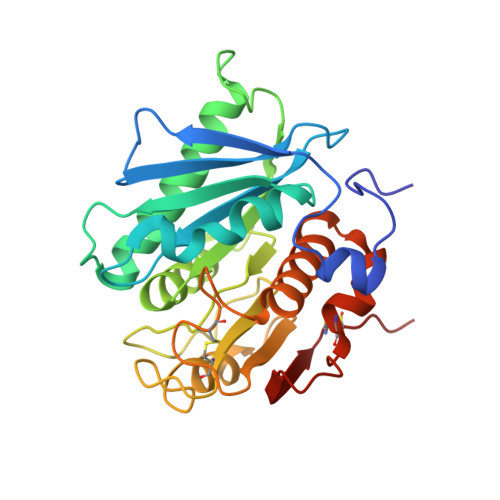Structural and functional characterization of polyethylene terephthalate hydrolase from Ideonella sakaiensis.
Liu, C., Shi, C., Zhu, S., Wei, R., Yin, C.C.(2019) Biochem Biophys Res Commun 508: 289-294
- PubMed: 30502092
- DOI: https://doi.org/10.1016/j.bbrc.2018.11.148
- Primary Citation of Related Structures:
6ILW, 6ILX - PubMed Abstract:
Polyethylene terephthalate (PET) hydrolase from Ideonella sakaiensis (IsPETase) can be used to degrade PET. In order to use IsPETase in industry, we studied the enzymatic activity of IsPETase in different conditions containing environmental and physicochemical factors commonly found in nature. We observed that salts and glycerol enhanced the enzymatic activity, while detergents and organic solvents reduced the enzymatic activity. IsPETase hydrolyzed p-nitrophenyl (p-NP) esters instead of naphthyl esters. To make IsPETase an enzyme capable of hydrolyzing naphthyl esters, site-directed mutagenesis was carried out based on the structural information provided by the crystal structure. We found that the IsPETase S93M , IsPETase W159F , and IsPETase N241F mutants can hydrolyze naphthyl esters. IsPETase engineering can direct researchers to use this α/β-hydrolase protein scaffold to design enzymes that can hydrolyze a variety of polyesters.
- Department of Biophysics, The Health Science Center, Peking University, Beijing, 100191, China. Electronic address: liucc@bjmu.edu.cn.
Organizational Affiliation:


















